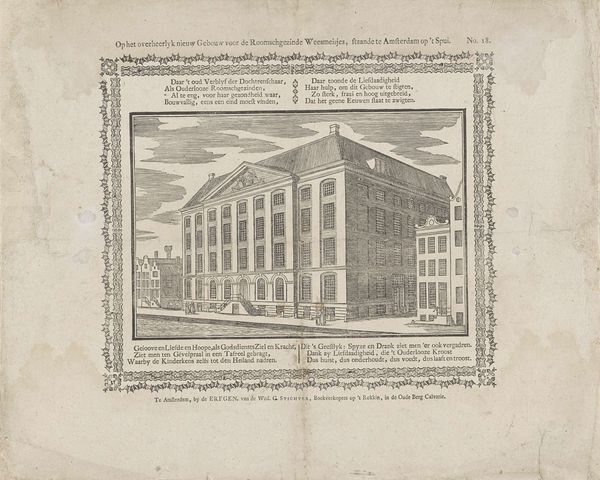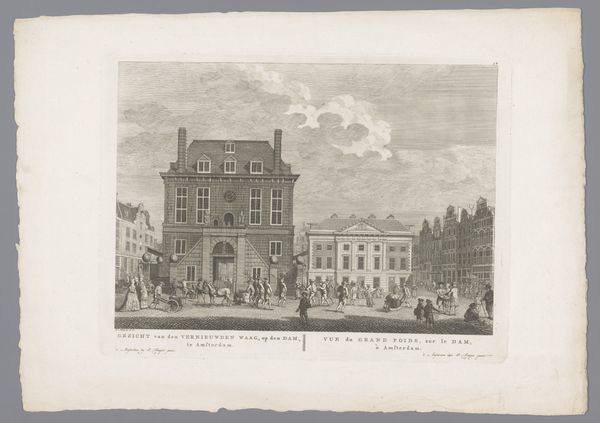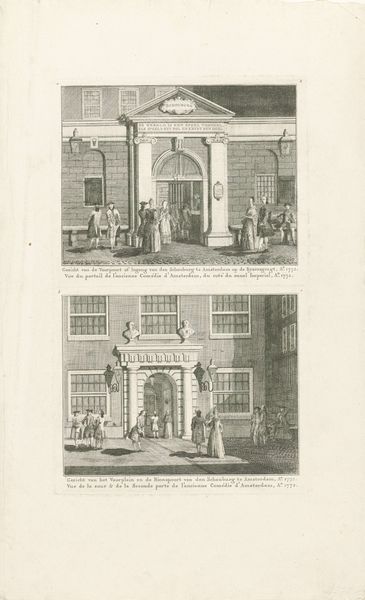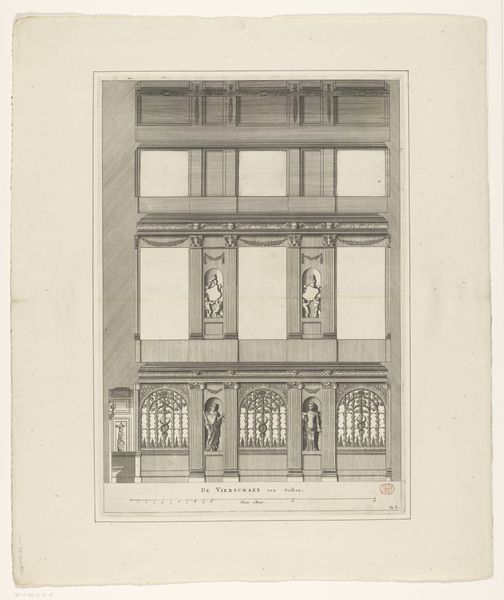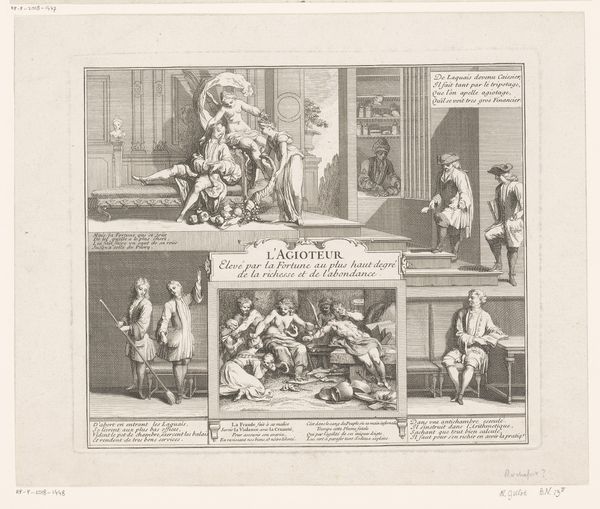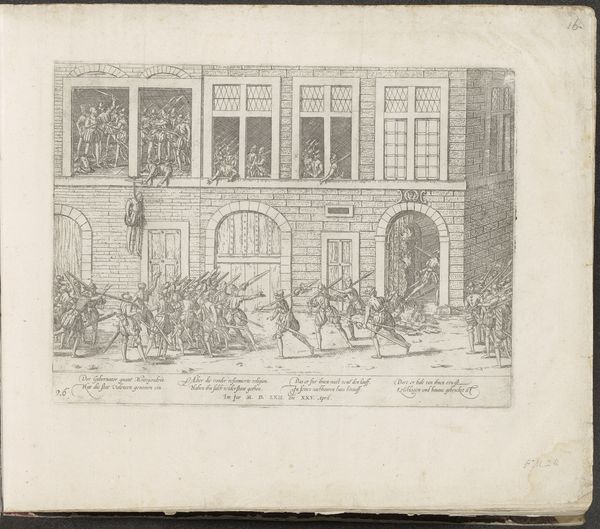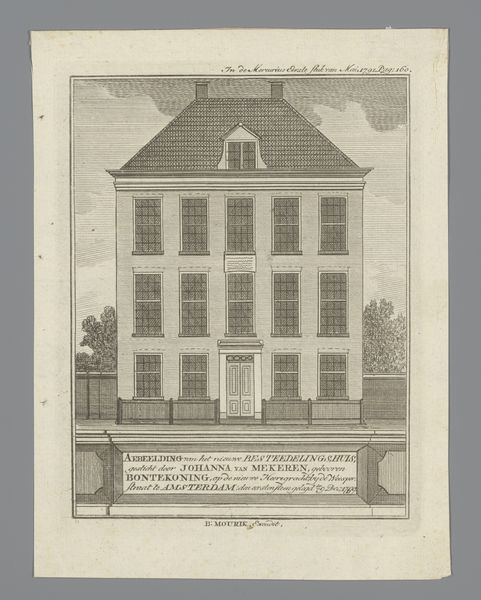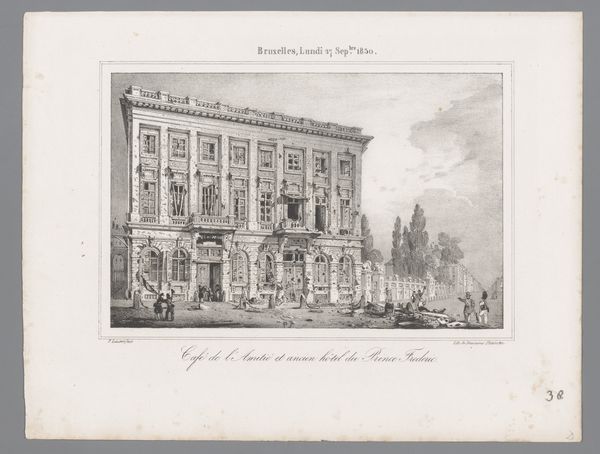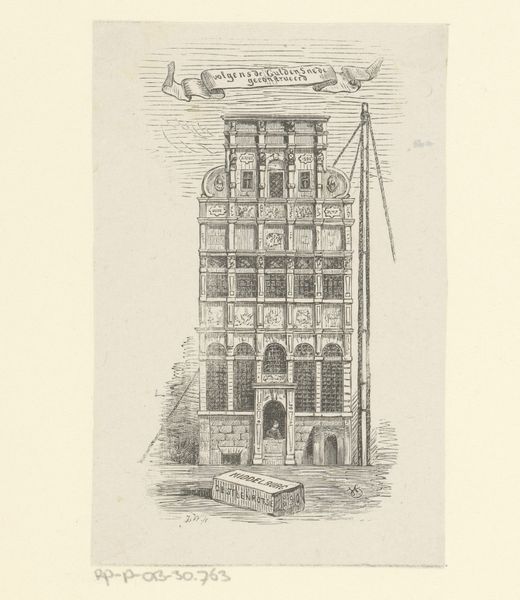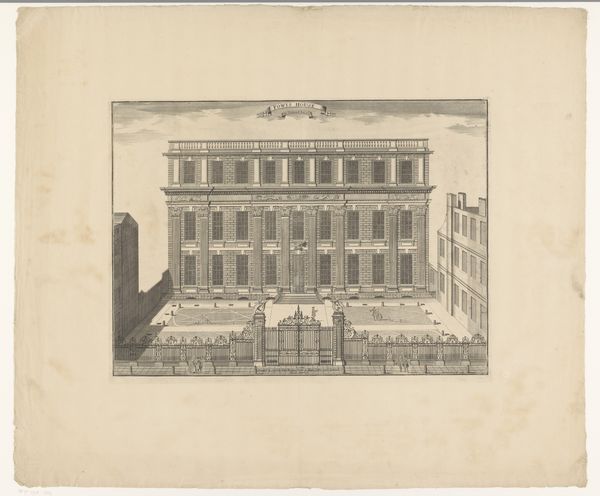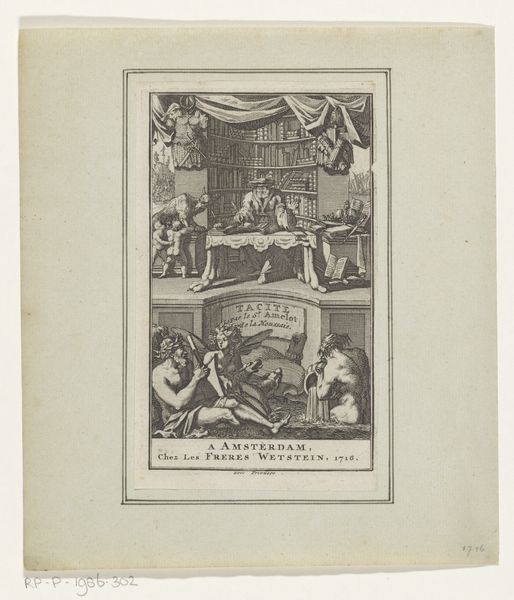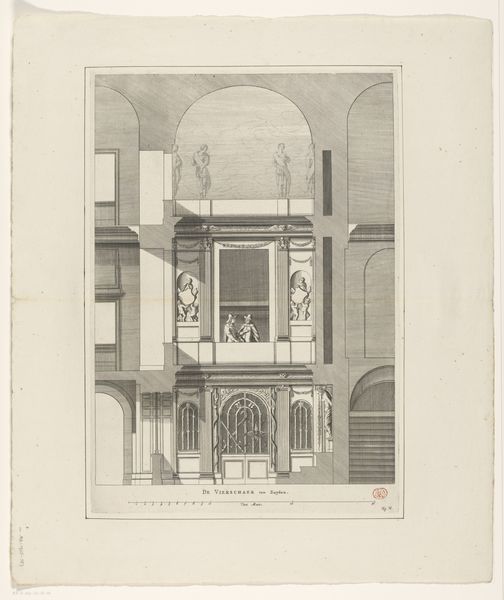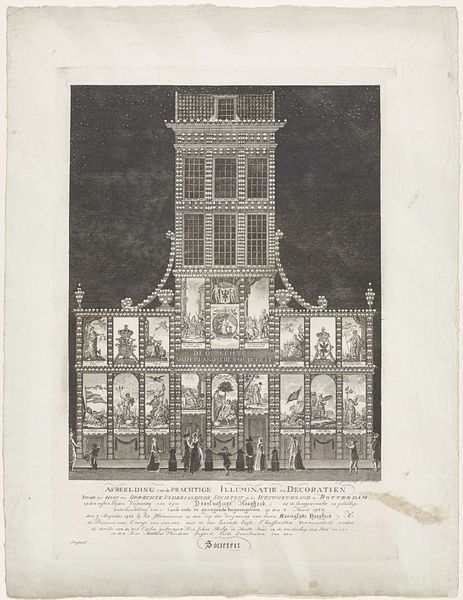
Verlichting van een woonhuis in Amsterdam ter ere van de aantreding van Willem V als stadhouder, 1766 1776
0:00
0:00
Dimensions: height 186 mm, width 180 mm
Copyright: Rijks Museum: Open Domain
Curator: Immediately, there is a density in this black and white image, like staring directly into a grid. Editor: This is a lovely engraving, titled "Illumination of a House in Amsterdam in Honor of William V Becoming Stadholder." It's from 1766, and created by Noach van der (II) Meer. Note the Baroque flourishes. Curator: Indeed, I see an abundance of symbols relating to royalty and celebration. How would that interplay for Amsterdam residents? It's not purely an architectural drawing, is it? Editor: No, I agree. It portrays a specific moment steeped in political significance. The illuminations on the building become symbolic of the joy and perhaps the anxieties surrounding the installation of William V. Curator: Look at how the facade dominates the image—window after window, filled with light. Adjacent to the building, other symbols amplify the emotional core: draped figures bearing arms, flags, even what looks like a celestial glow above a regal character seated beneath a wreath. What might those mean? Editor: The celestial light, as you put it, very likely signifies divine right. In this period of Baroque expression, overt references to power were crucial for establishing legitimacy. And that wreath underscores a feeling of triumphal arrival. But why include those vignettes alongside the structure itself? Why not simply show the residence alone, ablaze with lights? Curator: The inclusion suggests a deeper cultural narrative. By adding these vignettes, van der Meer creates a microcosm of Dutch identity—acknowledging lineage while hinting at potential divine backing for the incoming ruler. You could see them almost as supporting players in a tableau meant to reinforce public perception and memory. Editor: I see how the whole image constructs an ideological message, meticulously organized. It reminds us that artworks aren’t neutral objects but participate actively in meaning-making. Curator: Right! Looking at the whole piece, it seems designed not just to show an illuminated building but to imprint an event deeply into the cultural memory. A Baroque-style photograph, as it were. Editor: Absolutely. And even the strict rendering contributes to its air of deliberate documentation and the significance attributed to this event. The use of grayscale actually adds depth!
Comments
No comments
Be the first to comment and join the conversation on the ultimate creative platform.
